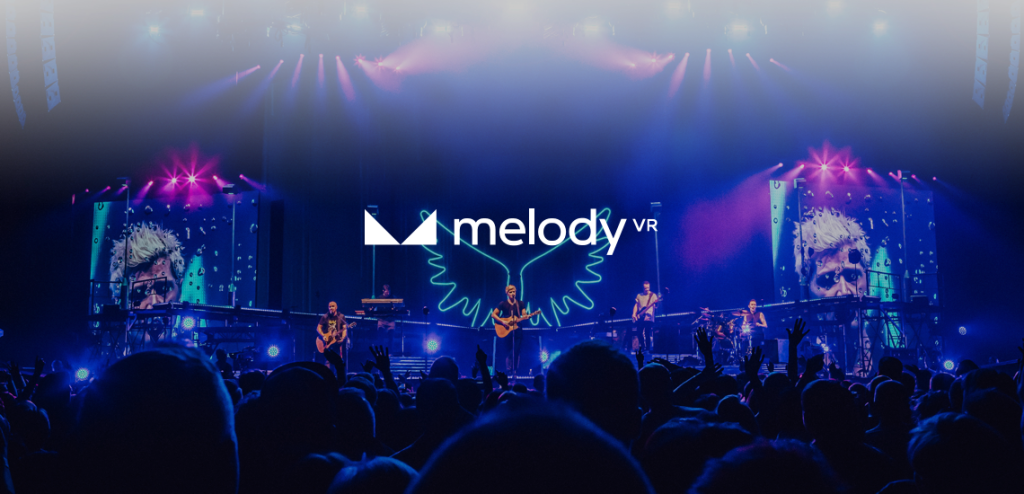The music industry has developed a growing interest in Augmented and Virtual Reality with the aim of improving the audiences’ engagement. Today’s listeners feel a particular need to integrate music with multimedia devices that increase the quality, efficiency and immersion of the content provided by artists, as well as increasing the simplicity and speed of its enjoyment.
A Forbes study of millennials found that 78 percent of them would prefer to spend money on unique and unforgettable experiences in the music industry, as for them the performance and the memory have real value.
The very first AR & VR concert experience was made possible by the gaming platform Fortnite. In fact, the collaboration between Travis Scott and Fortnite in April 2020 was a huge success, with over 12 million viewers watching the event on the platform. It is the most popular virtual show ever. Not only that, but rapper Lil Nas X also had 33 million online views on Roblox, showing the other possible face of gaming for kids: from a virtual world for kids to an online space to take with you in your bag of cool and exciting experiences.

Billie Eilish also entered fans’ homes through the screen: she performed from the stage of a Los Angeles studio, but the show crossed cities, oceans and worlds with her images, quickly.
Using the right amount of creativity and inventiveness, AR & VR in the music industry is applicable to any environment and situation.
How is the music industry changing with AR & VR?
Augmented and virtual reality represent a real revolution in the music industry, as they have the ability to enrich the human experience and can create situations in which people turn from passive to active spectators. New technologies have completely changed the fate of online concerts, which are visible in virtual environments thanks to the rapid growth of virtual production and metaverse platforms, involving an unlimited number of users with broadband connections and wearable devices in a multi-sensory way.

The aim is to replace the perceptions of the real senses with computer-generated ones, which are derived from a database describing a 3D scene with object animations, within which the changes introduced by the active role the user takes in the virtual system can also be included. This is an epoch-making change in the way music is enjoyed, and obviously does not stop at concerts.
AR & VR can also be integrated with music videos, giving listeners the opportunity to participate in their performance and create immersive and unforgettable experiences. This is the example brought by the video of Bjork’s Stonemilker, presented at MoMA and shot with the possibility to interact through plug-ins, giving the perception of driving the video itself. The video of U2’s Song for Someone was also designed for virtual reality.
And that’s what we’re getting to, a completely new way of experiencing music, more immersive, more exclusive and more direct. Many artists, as we have seen from the examples, are trying to move in an increasingly innovative way in relation to new technologies.

The keyword for AR & VR in the music industry is: interact. Users are catapulted into the artists’ performances and transformed into avatars where they have the possibility to interact with other avatars of other fans or directly with the avatar of the singer, either during backstage or by requesting a specific song. In addition, the user can move around, modify the surrounding space, form relationships and communicate with other fans. Without forgetting that the main motivation for everything is to enjoy a concert, possibly live. Interaction and movement are made possible through 360-degree filming, in which images from numerous perspectives are recorded simultaneously.
Augmented and virtual reality makes it possible to be active and present in places and environments other than those one is in, but with an extremely realistic appearance. Online concerts create virtual environments that allow the user to be involved on a multisensory level thanks to 3D images and sounds, offering a 360° experience.

How to enjoy concerts and performances with augmented and virtual reality?
More and more apps are coming out that allow the user to watch concerts in virtual reality, such as:
1. UnReal Club: the first Italian application that allows users to enjoy a virtual and immersive musical experience. It was born from the idea of combining the world of music with that of virtual reality to allow people to return to artistic performances by leveraging the potential of new immersive technologies. Access to the app is simple and intuitive: just register, create your own avatar, personalize it with gadgets and clothing and you’re done. Just like live, in each virtual location the avatars of all the users come together to watch the music event on air at that moment, to interact with each other just as if they were in a video game and to perform actions thanks to head tracking and audio chat;
2. MelodyVR: this is a start-up created in 2018 that has revolutionized the way of experiencing music. The application allows users to jump from one concert to another or follow a predefined path. There are several devices compatible with MelodyVR, the important thing is that it is a virtual reality visor. Some examples are: Samsung Gear VR, Google Cardboard, Playstation, Oculus Rift or Google Daydream View;
3. ConcertVR: a dedicated platform for concerts and music experiences. It has all the features of the other applications but also allows viewing of past events.
4. The Wave: a new kind of interactive music experience. Wearing a VR visor, users have the possibility to experience music festivals and concerts and can also socialize with their friends via the platform. Music creators can customize the way their audience is immersed in their music by transporting them from a realistic concert venue, to an amazing light show or into space. This app is the perfect tool to empower artists and transform the way fans connect with their music.

What are the benefits of AR & VR in the music industry?
The advantages and benefits of using augmented and virtual reality in the music industry are numerous:
– No limits: it is possible to attend events wherever you are without limitations such as physical impossibility, geographical remoteness or any other kind of impediment that would prevent you from seeing a band or your favorite singer perform;
– Minimal costs: if you have a device with an internet connection and a VR viewer, you can simply pay for the concert ticket at a much lower cost than a live concert;
– Simple, easy, accessible to all: attending a concert or event online is quick and easy. In just a few minutes, in fact, you can buy your ticket and watch the performance, go on stage or move backstage for a 360° immersive experience;
– It strengthens the relationship between singer and fan: by involving the user at 360°, the memory of the event will remain in their mind for a long time.

These technologies still have plenty of room to grow in the music industry, what will they create to surprise us again?

